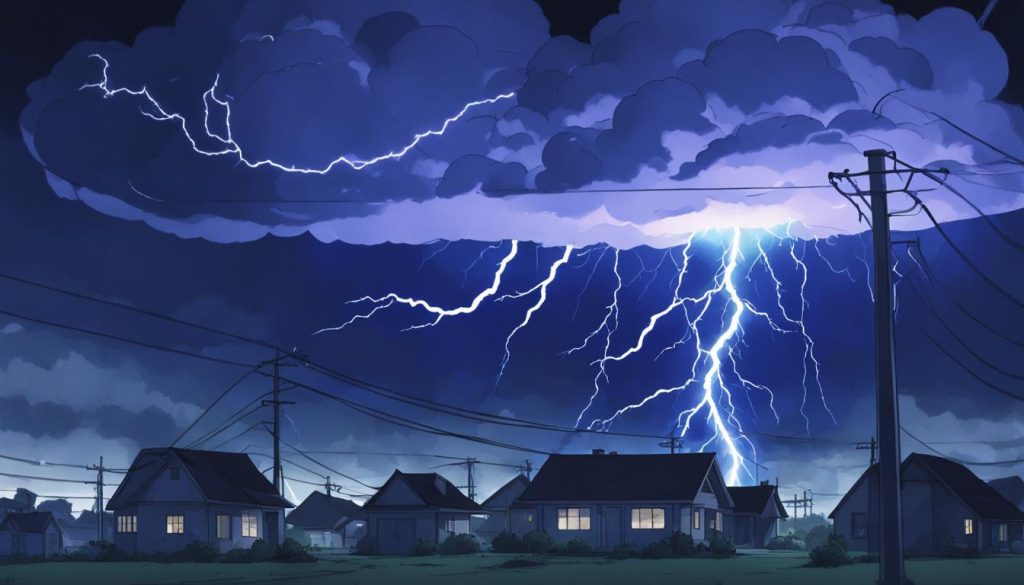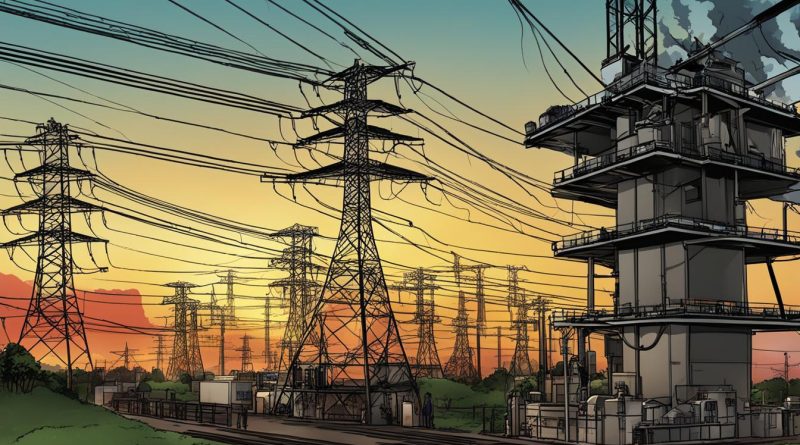Exploring Why Electricity Is So Expensive Today
Electricity bills are an inevitable expense for households and businesses alike, but have you ever wondered why they seem to keep increasing? In this section, we’ll take a closer look at the factors that contribute to the high electricity prices we see today. By understanding the reasons behind these rising costs, we can make informed decisions to conserve energy and cut down on expenses.
One of the primary reasons why electricity is so expensive is the cost of electricity production. The process of generating electricity relies on complex machinery and the extraction of natural resources, such as coal, gas, and oil. The costs of these resources and maintaining the machinery only add to the overall price of producing electricity.
Market dynamics also play a significant role in determining electricity prices. When demand for electricity is high, prices tend to increase, as the market sees an opportunity for more profit. Similarly, government regulations and environmental considerations may cause prices to rise as companies invest in new technologies and meet stricter standards.
In the next section, we’ll explore these factors in greater depth to gain a deeper understanding of what’s driving high electricity prices and what we can do about it.
Key Takeaways
- Electricity prices have been steadily increasing in recent years.
- The cost of electricity production and market dynamics both contribute to high prices.
- Government regulations and environmental considerations may also cause prices to rise.
- Understanding these factors can help consumers conserve energy and save money on their electricity bills.
Factors Affecting Electricity Prices
Electricity prices are determined by a multitude of factors. To gain a comprehensive understanding of the complexities behind the rising costs of electricity, it’s essential to analyze the various elements that contribute to its pricing. In this section, we will explore three significant factors that have a significant impact on electricity prices. They include:
- Electricity Market Dynamics: Fluctuations in supply and demand can result from seasonal changes, natural disasters, or other factors that affect supply. In addition, the changing dynamics of the electricity market influenced by regulatory measures and the entrance of new industry players also affect pricing.
- Energy Pricing Factors: The cost of producing and delivering electricity is influenced by a variety of pricing factors. These include fuel prices (e.g., oil, natural gas, and coal), the location of power plants, transmission and distribution costs, and the cost of maintenance and upgrades to equipment.
- Electricity Cost Analysis: A cost analysis of electricity production is required to understand the precise calculation of electricity prices. This analysis helps to determine the most effective pricing strategy and how to generate the highest profit margin while remaining competitive in the market.
As a result of these factors, consumers have seen a steady rise in electricity bills. It’s essential for consumers to understand how electricity prices are determined so that they can adapt to pricing changes and make informed decisions about energy consumption. In the next section, we will discuss how these factors affect the increase in the price of electricity bills in more detail.

Conclusion
In conclusion, understanding the various factors that contribute to the rising costs of electricity can empower consumers to make informed decisions about their energy use and efficiency. The electricity market dynamics and pricing factors involved, such as production costs, government regulations, and environmental considerations, all play a significant role in determining electricity prices.
Consumers can take steps to reduce energy consumption and decrease electricity bills, such as switching to energy-efficient appliances, installing energy-saving light bulbs, and using smart thermostats to control heating and cooling. Additionally, some energy providers offer renewable energy options that can reduce environmental impact and electricity costs.
By taking a proactive approach to energy consumption, consumers can mitigate the impact of high electricity prices and promote sustainability in their communities.
FAQ
Why are electricity prices so high?
Electricity prices are influenced by various factors, including the cost of electricity production, market dynamics, government regulations, and environmental considerations. These factors contribute to the overall expenses associated with generating, transmitting, and distributing electricity, which in turn, affect the prices consumers pay.
What are the factors affecting electricity prices?
There are several factors that can impact electricity prices. These include the cost of fuel used for electricity generation, infrastructure investments required for transmission and distribution networks, weather conditions that affect supply and demand, government policies and regulations, and the availability of renewable energy sources. Additionally, market dynamics, such as competition and changes in fuel prices, can also influence electricity prices.
How does the cost of electricity production affect pricing?
The cost of electricity production, which includes expenses related to fuel, maintenance, labor, and infrastructure, significantly impacts electricity prices. As these production costs increase, electricity providers may need to adjust their tariffs to ensure they can cover their expenses while maintaining profit margins. This ultimately leads to higher electricity prices for consumers.
Why do electricity bills keep rising?
Rising electricity bills can be attributed to various factors. These include increasing production and distribution costs, fluctuations in fuel prices, investments in infrastructure to maintain and expand the electricity grid, and the implementation of government policies aimed at promoting renewable energy sources. Additionally, changes in consumption patterns, such as increased demand during peak periods, can also contribute to higher electricity bills.
How can consumers mitigate the impact of high electricity prices?
Consumers can take several steps to mitigate the impact of high electricity prices. These include adopting energy-efficient practices, such as using energy-saving appliances and lighting, managing energy consumption during peak periods, and considering renewable energy options, such as installing solar panels. Additionally, comparing electricity tariffs from different providers and exploring available incentives or rebates can help consumers find more affordable options.




